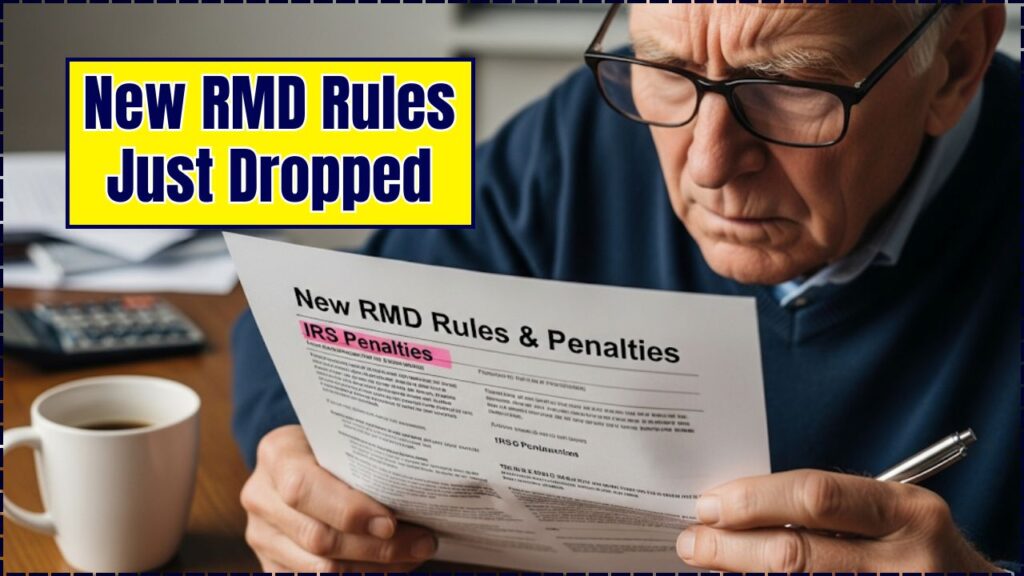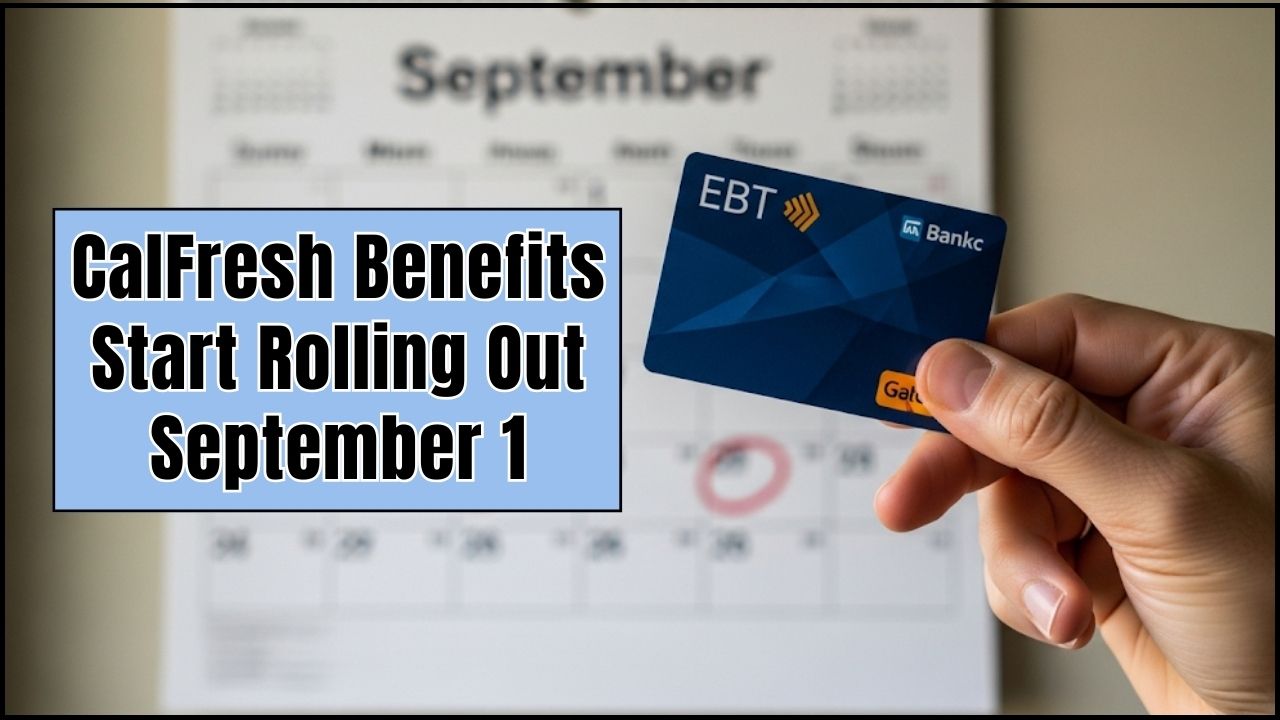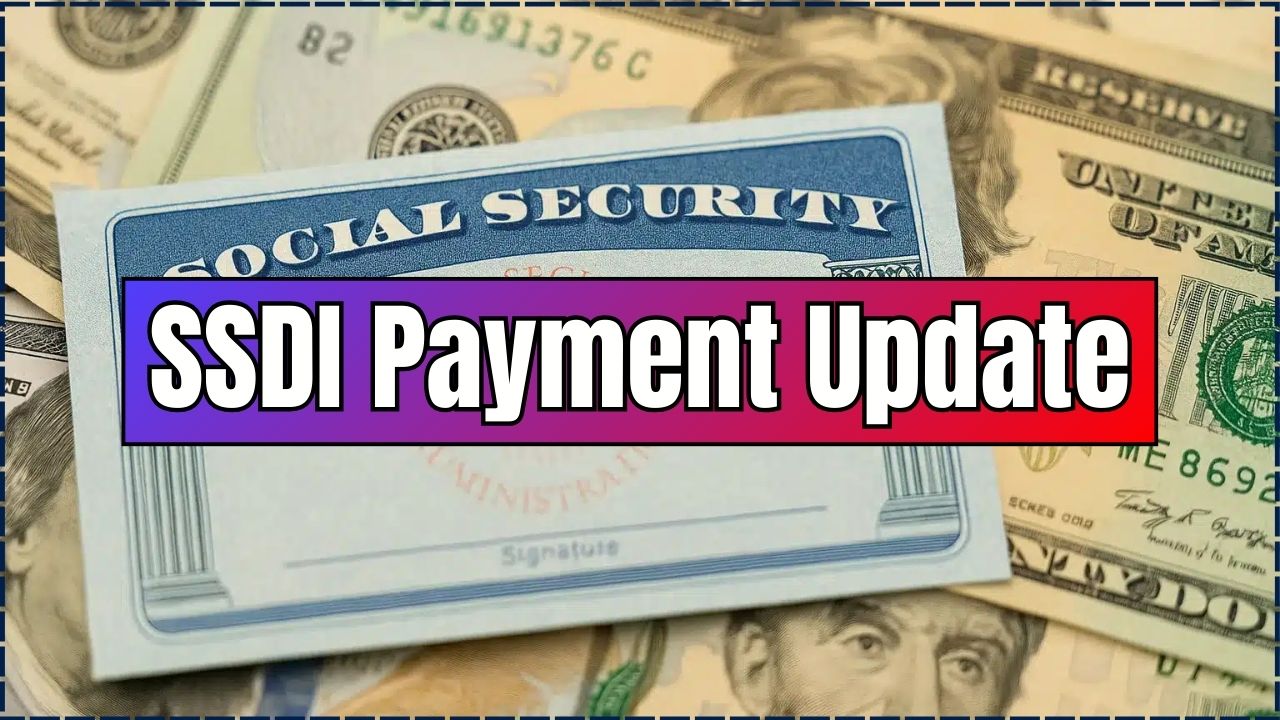If you’ve got a retirement account, you’ve probably heard the buzz: new RMD rules just dropped, and they’re shaking up how retirees must handle withdrawals. These changes under the SECURE 2.0 Act aren’t just small tweaks—they could save (or cost) you thousands in taxes and penalties. And let’s be real: nobody wants to give Uncle Sam a bigger slice than necessary.

The IRS’s Required Minimum Distribution (RMD) rules are essentially the government’s way of saying: “You’ve had your tax-deferred ride, now it’s time to pay up.” Retirees, near-retirees, and beneficiaries all need to pay attention because missing an RMD deadline can trigger massive penalties.
New RMD Rules Just Dropped
| Key Rule / Update | Details |
|---|---|
| New Starting Age | RMD age raised to 73 (2023), moving to 75 in 2033 |
| Penalty Reduction | Missed RMD penalty cut from 50% to 25%, and to 10% if corrected promptly |
| Roth 401(k) Exemption | No RMDs for Roth 401(k)s starting in 2024 |
| Beneficiary Rule | Inherited IRAs must be emptied within 10 years; annual RMDs may apply |
| Qualified Charitable Distributions (QCDs) | Limit indexed for inflation, $108,000 in 2025 |
The new RMD rules give retirees more time, flexibility, and lighter penalties—but they also raise the stakes for tax planning. Whether you’re staring down your first RMD at 73, thinking about Roth conversions, or figuring out how to pass wealth to kids without a tax bomb, the key is to plan ahead. With the right strategy, you can keep more of your hard-earned money and avoid the IRS’s sting.
What Are RMDs? (Made Simple)
Required Minimum Distributions (RMDs) are the minimum amounts you must withdraw each year from traditional IRAs, 401(k)s, 403(b)s, and similar accounts once you hit a certain age. The IRS gave you a tax break when you put that money in—but now it’s time for them to get their cut.
Example: If you’ve got $500,000 in a traditional IRA at age 73, the IRS expects you to withdraw about $18,867 (based on their life-expectancy tables). That withdrawal becomes taxable income.
Timeline of RMD Age Changes
The age at which you must begin taking RMDs has changed significantly over the past few years, thanks to the SECURE Act and SECURE 2.0 Act. Knowing your “required beginning date” is crucial.
- Before 2020: RMDs began at age 70½.
- 2020 – 2022: The age was increased to 72.
- 2023 – 2032: The age was increased again to 73.
- 2033 and Beyond: The age will increase to 75.
What Changed in the New RMD Rules?
1. Age Requirement Increased
- Old rule: Start RMDs at age 72.
- New rule: Start at age 73 (as of 2023).
- Future rule: Age jumps to 75 in 2033.
This gives folks more time to let accounts grow and do tax planning, like Roth conversions before RMDs kick in.
2. Penalties Softened
The penalty for missing an RMD used to be a whopping 50% of the shortfall. Now:
- 25% penalty if you miss it.
- 10% penalty if you fix it within two years (via IRS Form 5329).
3. Roth 401(k) Exemption
Big win: Roth 401(k)s are now exempt from RMDs starting in 2024, just like Roth IRAs. This means retirees can let Roth balances grow tax-free for life.
4. Inherited IRA Changes
Most non-spouse beneficiaries must now empty the account within 10 years. If the original owner had already started RMDs, beneficiaries may also have to take annual distributions in years 1–9.
Example: If you inherit a $500K IRA from a parent, you can’t stretch it over your lifetime anymore—you’ve got just 10 years, which can create big tax bills.
5. QCDs (Charitable Giving) Expanded
Want to give to charity and cut taxes? Qualified Charitable Distributions (QCDs) are now indexed for inflation. In 2025, the annual limit will be $108,000, plus a one-time $54,000 gift option to certain trusts.
Old vs. New Penalties
This table highlights how the penalty for failing to take a timely RMD has changed.
| Penalty Type | Before SECURE 2.0 Act | After SECURE 2.0 Act | What it Means for You |
| Standard Penalty | 50% of the amount not distributed | 25% of the amount not distributed | A significant reduction, but still a large penalty. |
| Reduced Penalty | Not applicable | 10% of the amount not distributed | If you correct the missed RMD by the end of the second year after it was due. |
Why Retirees Should Care (Real-Life Scenarios)
- The Smiths (Retired Couple, Age 73): They have $1.2M in IRAs. Their first RMD is about $45,000. That extra income could push them into a higher tax bracket and increase their Medicare premiums. With smart planning (like partial Roth conversions before 73), they could’ve reduced future RMDs.
- Mike (Single, Inherits IRA at 50): He inherits $400,000. Under old rules, he could stretch withdrawals over 30 years. Now? He must drain it in 10 years, likely adding $40,000/year in taxable income on top of his salary.
- Linda (Charitable Giver): She directs $20,000 from her IRA to her favorite nonprofit. That counts toward her RMD, and she avoids paying income tax on it. Win-win.
Practical Checklist: What To Do Before Year-End
- Mark your calendar: First RMD by April 1 after turning 73; every December 31 after that.
- Double-check account balances: Use Dec. 31 of the prior year’s balance.
- Coordinate accounts: Each 401(k) needs its own RMD, but IRAs can be combined.
- File IRS Form 5329 quickly if you miss an RMD.
- Talk to a pro: Tax and estate planning can save thousands.
Top 3 Mistakes to Avoid
- Missing the “First Year” Deadline: Your first RMD can be delayed until April 1 of the year after you reach your required beginning age. But if you do this, you will have to take two RMDs in that single year, which could push you into a higher tax bracket.
- Ignoring the 10-Year Rule for Inherited IRAs: For most non-spouse beneficiaries, inherited retirement accounts must be fully withdrawn within 10 years of the original owner’s death. You can’t just let it sit and grow indefinitely.
- Forgetting About a Small Account: If you have multiple retirement accounts, you must calculate the RMD for each one. While you can take the total RMD from any of your accounts, forgetting to include a small, forgotten 401(k) from an old job in your calculation can result in a penalty.
Pro Tax-Saving Hacks
- Roth Conversions (Before 73): Pay some tax now at lower rates, avoid bigger RMDs later.
- QLACs: Put up to $200K into an annuity that delays RMDs until 85.
- Charity Smart: Use QCDs for tax-free giving and RMD satisfaction.
- Bracket Management: Spread withdrawals over multiple years to avoid jumping into a higher tax bracket.
Real-World Case Study: The Smith Family
The Smiths inherited a traditional IRA from their mother, who passed away in 2024. The account was worth $500,000. Under the old rules, they might have been able to stretch out withdrawals over their lifetimes, paying a little in taxes each year. Now, under the new 10-year rule, they must empty the entire account by the end of 2034. Their financial advisor helped them create a withdrawal plan, taking out a little each year to minimize the tax hit and avoid a massive lump-sum withdrawal in the final year.
FAQs
Q1: What happens if I miss my RMD?
Penalty is 25%, reduced to 10% if corrected fast.
Q2: Can I withdraw more than my RMD?
Yes, but remember—it’s taxable.
Q3: Do Roth IRAs have RMDs?
No. Roth IRAs never require RMDs during your lifetime.
Q4: What if I’m still working at 73?
You may delay RMDs from your current employer’s 401(k) if you don’t own more than 5% of the company.
Q5: How are married couples treated?
Each spouse calculates their RMD separately, based on their own accounts.








